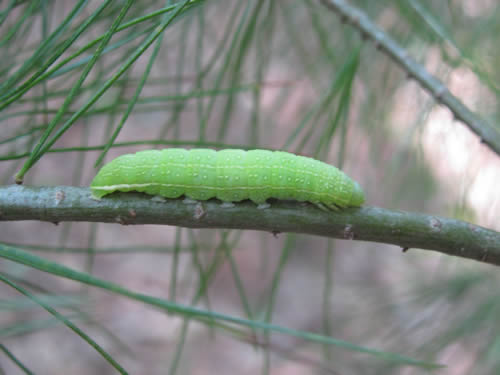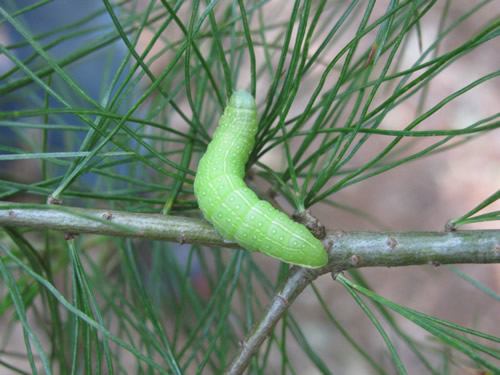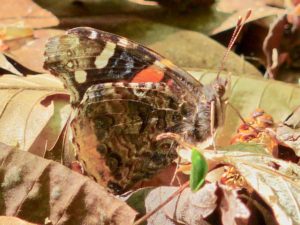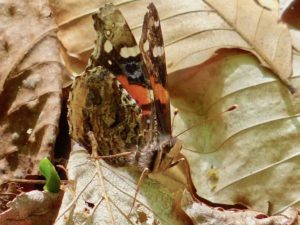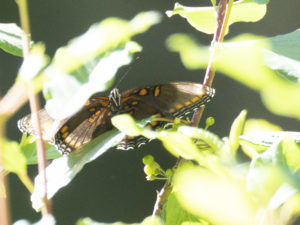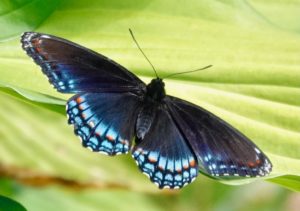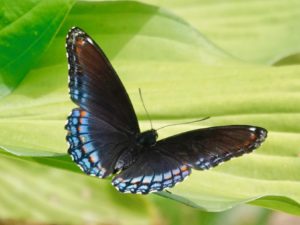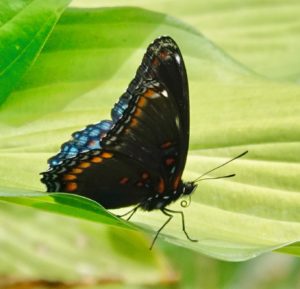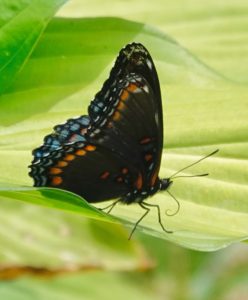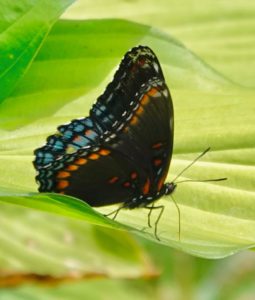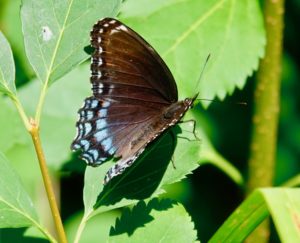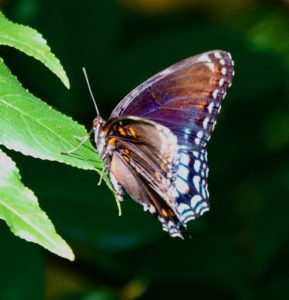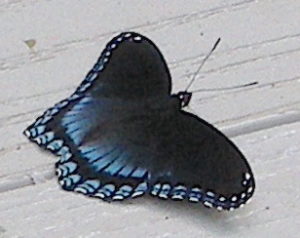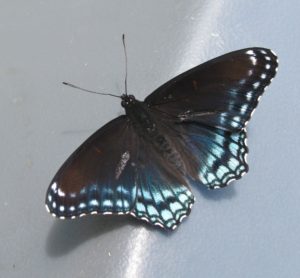Sightings – Butterflies & Moths
Observer: Paul Lauenstein
Observation Date: 5/19/19
Observation Time: 3:08 p.m.
Observation Location: Billings Loop Botanical Trail
Common Name: Red Admiral butterfly
Scientific Name: Vanessa atalanta
Comments: Mating usually occurs in late fall or early winter following collective migration to southern regions with a warmer climate. The red admiral’s main host plant, stinging nettle, is most abundant during this migration. Larval development proceeds through winter and adults are first sighted in early spring. The new generation of adults migrates north before mating, because food is usually diminished by late spring. During migration, the red admiral flies at high altitudes where high-speed winds carry the butterfly, requiring less energy.
More Information: Wikipedia
Observer: Paul Lauenstein
Observation Date: 5/7/11
Observation Time: 11:40 a.m.
Observation Location: 4 Gavins Pond Road
Common Name: Red Admiral butterfly
Scientific Name: Vanessa atalanta
Comments: Red Admirals prefer sap flows on trees, fermenting fruit, and bird droppings; visiting flowers only when these are not available. Then they will nectar at common milkweed, red clover, aster, and alfalfa, among others.
More Information: Butterflies and Moths of North America
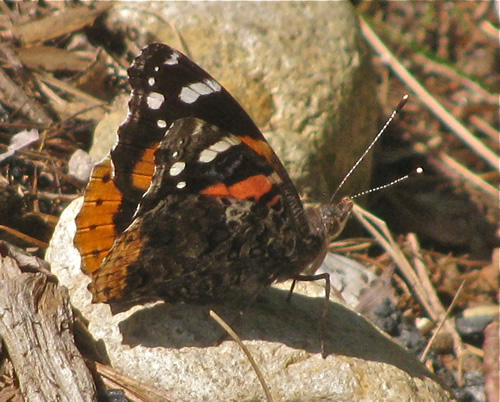
Observer: Josh Simons
Observation Date: 6/14/20
Observation Time: 4:00 p.m.
Observation Location: Moose Hill area
Common Name: Red-spotted Admiral (or red-spotted purple) butterfly
Scientific Name: Limenitis arthemis astyanax
Comments:
The red-spotted purple butterfly is the same species as the white admiral butterfly. It is a North American species in the genus Limenitis. It has been studied for its evolution of mimicry, and for the several stable hybrid wing patterns within this nominal species; it is one of the most dramatic examples of hybridization between non-mimetic and mimetic populations.
L. arthemis can be split into two major groups, mainly based on one physical characteristic: the presence or absence of a white band along the wings. Individuals of the northern group, called white admirals, have a conspicuous white band that traverse both the dorsal and ventral surfaces of the wing, while those of the southern group, called red-spotted purples, lack that trait as they have evolved to mimic the poisonous pipevine swallowtail (Battus philenor). Due to overlap in distribution among the two major groups, subspecies are numerous as hybridization occurs frequently.
More Information: Wikipedia
Observer: Paul Lauenstein
Observation Date: 6/10/23
Observation Time: 11:40 a.m.
Observation Location: Gavins Pond Rd. (my back yard)
Common Name: Red-spotted Admiral (or red-spotted purple) butterfly
Scientific Name: Limenitis arthemis astyanax
Comments:
The red-spotted purple butterfly is the same species as the white admiral butterfly. It is a North American species in the genus Limenitis. It has been studied for its evolution of mimicry, and for the several stable hybrid wing patterns within this nominal species; it is one of the most dramatic examples of hybridization between non-mimetic and mimetic populations.
L. arthemis can be split into two major groups, mainly based on one physical characteristic: the presence or absence of a white band along the wings. Individuals of the northern group, called white admirals, have a conspicuous white band that traverse both the dorsal and ventral surfaces of the wing, while those of the southern group, called red-spotted purples, lack that trait as they have evolved to mimic the poisonous pipevine swallowtail (Battus philenor). Due to overlap in distribution among the two major groups, subspecies are numerous as hybridization occurs frequently.
More Information: Wikipedia
Observer: Paul Lauenstein
Observation Date: 8/11/23
Observation Time: 10:30 a.m.
Observation Location: Gavins Pond Rd. (my back yard)
Common Name: Red-spotted Admiral butterfly
Scientific Name: Limenitis arthemis astyanax
Comments:
The red-spotted purple butterfly is the same species as the white admiral butterfly. It is a North American species in the genus Limenitis. It has been studied for its evolution of mimicry, and for the several stable hybrid wing patterns within this nominal species; it is one of the most dramatic examples of hybridization between non-mimetic and mimetic populations.
L. arthemis can be split into two major groups, mainly based on one physical characteristic: the presence or absence of a white band along the wings. Individuals of the northern group, called white admirals, have a conspicuous white band that traverse both the dorsal and ventral surfaces of the wing, while those of the southern group, called red-spotted purples, lack that trait as they have evolved to mimic the poisonous pipevine swallowtail (Battus philenor). Due to overlap in distribution among the two major groups, subspecies are numerous as hybridization occurs frequently.
Both the White Admiral and the Red-spotted Admiral have been sighted here in Sharon.
More Information: Wikipedia
Observer: Marshall Katler
Observation Date: 7/25/23
Observation Time: 12:30 p.m.
Observation Location: Mansfield St.
Common Name: Red-spotted Purple butterfly
Scientific Name: Limenitis arthemis
Comments: This butterfly was on this ramp to a shed for several hours, just opening and closing its wings, occasionally taking a short flight.
The red-spotted purple butterfly is the same species as the white admiral butterfly. It is a North American species in the cosmopolitan genus Limenitis. It has been studied for its evolution of mimicry, and for the several stable hybrid wing patterns within this nominal species; it is one of the most dramatic examples of hybridization between non-mimetic and mimetic populations.
L. arthemis can be split into two major groups, mainly based on one physical characteristic: the presence or absence of a white band along the wings. Individuals of the northern group, called white admirals, have a conspicuous white band that traverse both the dorsal and ventral surfaces of the wing, while those of the southern group, called red-spotted purples, lack that trait as they have evolved to mimic the poisonous pipevine swallowtail (Battus philenor). Due to overlap in distribution among the two major groups, subspecies are numerous as hybridization occurs frequently.
More Information: Wikipedia
Observer: Paul Lauenstein
Observation Date: 5/24/12
Observation Time: 8:20 a.m.
Observation Location: Gavins Pond area
Common Name: Red-spotted Purple butterfly
Scientific Name: Limenitis arthemis astyanax
Comments:
The red-spotted purple butterfly is the same species as the white admiral butterfly. It is a North American species in the cosmopolitan genus Limenitis. It has been studied for its evolution of mimicry, and for the several stable hybrid wing patterns within this nominal species; it is one of the most dramatic examples of hybridization between non-mimetic and mimetic populations.
L. arthemis can be split into two major groups, mainly based on one physical characteristic: the presence or absence of a white band along the wings. Individuals of the northern group, called white admirals, have a conspicuous white band that traverse both the dorsal and ventral surfaces of the wing, while those of the southern group, called red-spotted purples, lack that trait as they have evolved to mimic the poisonous pipevine swallowtail (Battus philenor). Due to overlap in distribution among the two major groups, subspecies are numerous as hybridization occurs frequently.
More Information: Wikipedia
Observer: Paul Lauenstein
Observation Date: 6/5/11
Observation Time: 4:50 p.m.
Observation Location: Kendall estate, Moose Hill Street
Common Name: Red-spotted Purple butterfly
Scientific Name: Limenitis arthemis astyanax
Comments:
The red-spotted purple butterfly is the same species as the white admiral butterfly. It is a North American species in the cosmopolitan genus Limenitis. It has been studied for its evolution of mimicry, and for the several stable hybrid wing patterns within this nominal species; it is one of the most dramatic examples of hybridization between non-mimetic and mimetic populations.
L. arthemis can be split into two major groups, mainly based on one physical characteristic: the presence or absence of a white band along the wings. Individuals of the northern group, called white admirals, have a conspicuous white band that traverse both the dorsal and ventral surfaces of the wing, while those of the southern group, called red-spotted purples, lack that trait as they have evolved to mimic the poisonous pipevine swallowtail (Battus philenor). Due to overlap in distribution among the two major groups, subspecies are numerous as hybridization occurs frequently.
More Information: Wikipedia
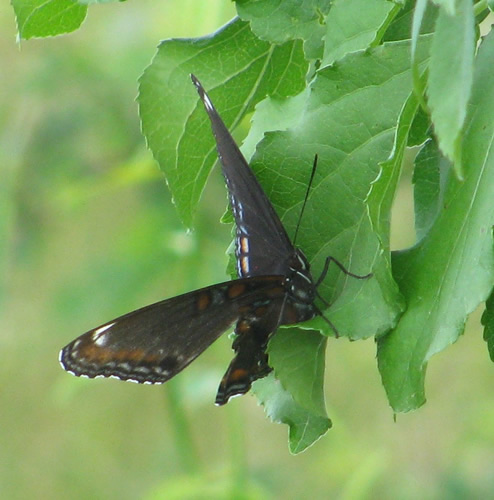
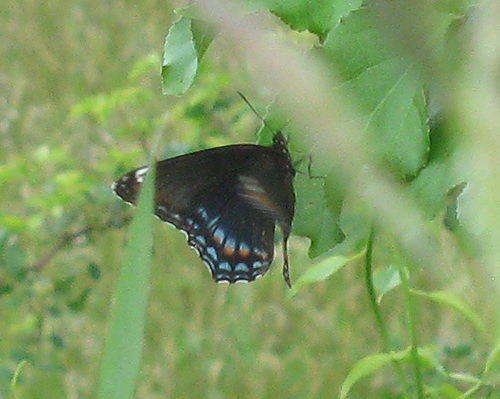
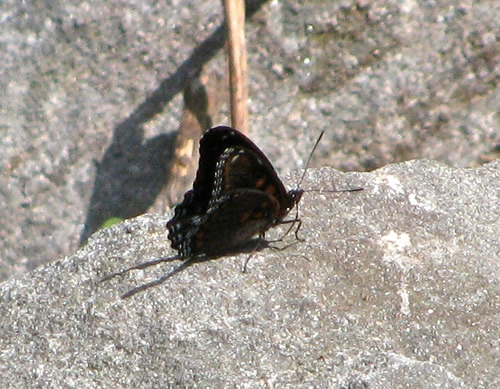
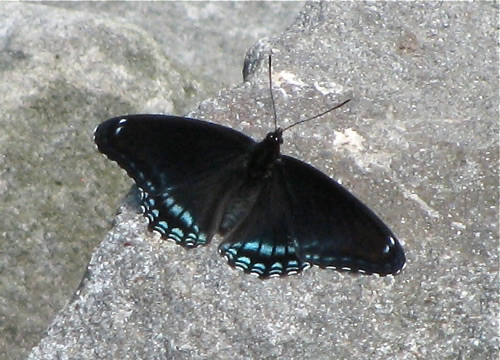
Observer: Faith Berkland
Observation Date: 6/6/15
Observation Time: 1:45 p.m.
Observation Location: 302 Mansfield Street
Common Name: Red-Spotted Purple butterfly
Scientific Name: limenitis arthemis
More Information: Butterflies and Moths of North America
Observer: Paul Lauenstein
Observation Date: 6/4/11
Observation Time: 3:15 p.m.
Observation Location: Conservation land near Billings Street
Common Name: Roland’s Sallow Moth (caterpillar)
Scientific Name: Psaphida rolandi
More Information: Bug Guide
